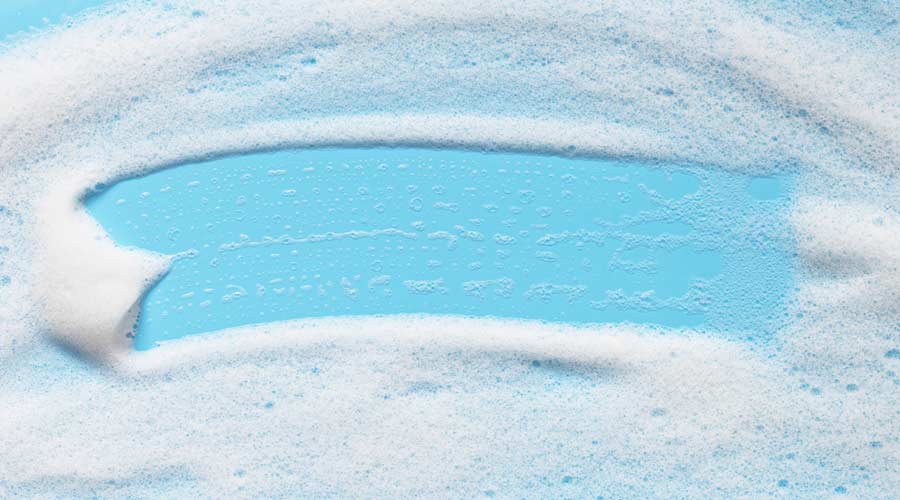
When it comes to carpet care, the more things change, the more they stay the same. On one hand, the art of carpet maintenance has undergone notable improvements in recent years thanks to technological advancements, growing sustainability initiatives, and the increasing need to drive efficiency. On the other hand, carpeting itself remains largely unchanged, and many tried-and-true carpet care methods are just as effective today as they were a decade ago.
Facility Cleaning Decisions took a look back at The Dos and Don’ts of Carpet Care (written before the pandemic) to assess old practices and get a feel for what’s changed and what hasn’t in the quest for cleaner, longer-lasting carpets.
Identifying Carpet Types
It was true then, and it’s true now: Carpet care is often treated as an afterthought. Post-pandemic, experts are still encouraging proactive, routine maintenance to preserve the look and life of carpeting.
“Unfortunately, most carpet cleaning programs are based on reactionary responses,” notes Stan Hulin, CEO of Future Floor Technology Inc., Gladstone, Oregon. “Once the carpet looks dirty, then it is assumed that it is time to clean it. This approach is counterproductive to an actual carpet cleaning and maintenance program.”
Carpet maintenance begins with proper identification of the carpet itself. As such, training is essential to identify carpet fibers and help facilities build a maintenance program based on manufacturers’ recommendations.
Hulin admits that carpet fibers haven’t changed much over the years. Nevertheless, there are standard fibers cleaning technicians should be aware of. These include nylon, polyester, triexta polyester (also known as polytrimethylene terephthalate, or PTT), polypropylene (olefin), wool, and cotton.
“Becoming a certified carpet cleaning technician is essential for learning how to identify, clean and maintain them,” he says.
Carpets and IAQ
One thing that has changed since the pandemic is the increased awareness of indoor air quality (IAQ) and the role of carpeting. According to Dale Franke, vice president of sales and marketing, Acme Paper & Supply Co., Jessup, Maryland, people are transitioning toward environmentally friendly products because of their positive impact on indoor air quality and health. This is a quick and easy transition for many departments.
More difficult to manage is the fact that carpets can act as natural air filters by trapping dust and allergens. At the same time, the accumulation of dust mites, pollen and pet dander in carpets can become airborne, exacerbating respiratory issues.
That reality is driving better awareness of daily maintenance in the form of vacuuming. While the importance of daily vacuuming remains unchanged, facilities are paying more attention to the types of vacuums they’re purchasing.
“People are more concerned about HEPA filtration, and they’re looking to buy more efficient vacuum cleaners to address indoor air quality,” notes Franke. “A good HEPA filter is going to capture 99.97 percent of the particles that are 0.3 microns in diameter and have a MERV rating of 17 to 20.”
The use of autonomous vacuum cleaners is also proliferating post-pandemic. Franke shares that the company has had an uptick in robotic vacuum cleaner sales in industries with large, carpeted areas, such as hospitality.
Spot Removal
If Facility Cleaning Decisions’ past coverage of carpet care is any indication, spills and stains are still a concern — and facilities continue to make the same mistakes when addressing them.
“Nine times out of 10, people walk away from a spill and hope no one sees it,” says Franke. “Once it has dried, it’s difficult for the cleaning staff to identify what it is and treat it correctly.”
For this reason, time is of the essence. Once the cause of the spot or spill has been identified, custodians need to select the appropriate product and removal method right away.
For traditional spotting, Hulin recommends applying cleaning solution to the impacted area, tamping with a tamping brush and blotting up the spot with a towel. One common mistake that seems to have survived over the years: vigorously rubbing the affected area.
“Staff should be trained to never agitate the spot by rubbing on it, or aggressively using a brush in a back-and-forth motion,” Hulin warns. “This may cause damage to the fibers.”
And when it comes to equipment innovations, experts say there has been no need to reinvent the wheel. Portable extractors are still an effective removal method for unsightly spots.
How to Know When Less is More in Carpet Care

 The Down and Dirty on Cleaning in Virus Season
The Down and Dirty on Cleaning in Virus Season How Surfactant Use is Expanding in Commercial Cleaning
How Surfactant Use is Expanding in Commercial Cleaning Operational Excellence Series 2025: Better Budgeting
Operational Excellence Series 2025: Better Budgeting
